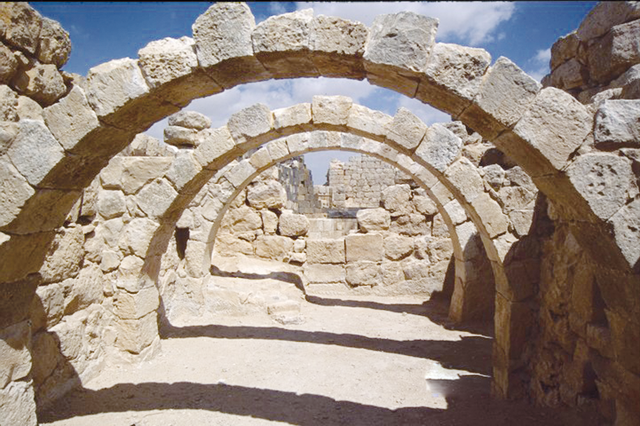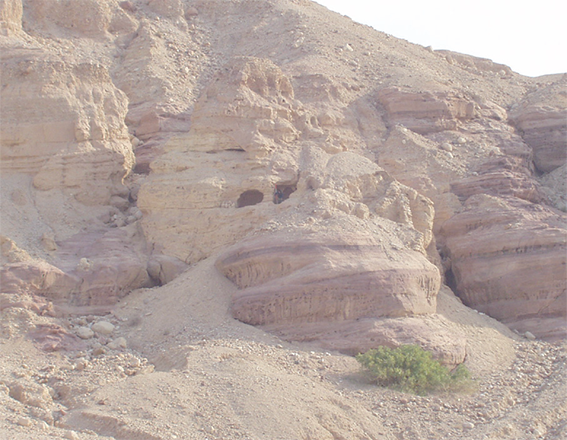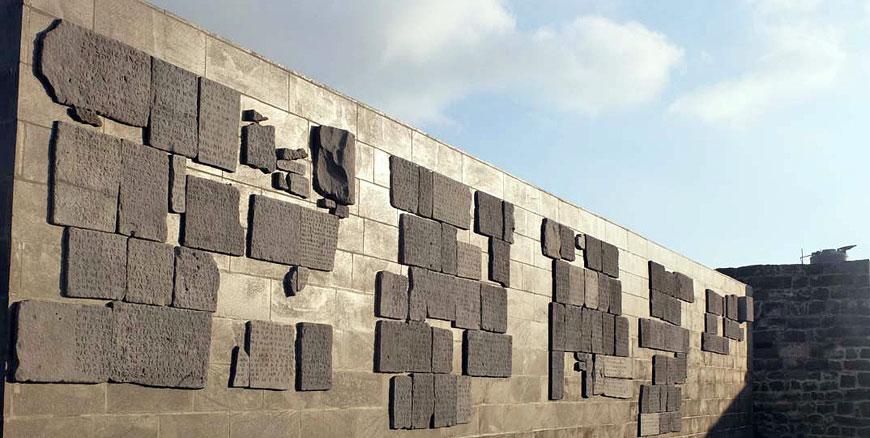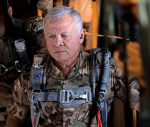You are here
Hallabat complex: From Roman military post to 6th century monastery
By Saeb Rawashdeh - Dec 31,2023 - Last updated at Jan 03,2024

A room with arches at Hallabat (Photo courtesy of ACOR)
AMMAN — Hallabat complex includes a mosque, nearby baths, other buildings and structures. Located 60 kilommetres northeast of Amman, it was a strategic site in 2nd and 3rd centuries when the Roman Empire started to crumble and suffered a series of defeats from Sassanid Empire.
The most dramatic setback during “the Crisis of the 3rd century” was a defeat and capture of the Emperor Valens at Edessa in 260 AD. Hallabat was one of many military installations on Via Nova Triana, connecting Damascus with Ayla (modern day Aqaba) and consolidating the eastern frontier.
The site was transformed multiple times, and from a strictly military post it was adapted into a more civilian shape.
Some of the hypotheses and conclusions were totally unexpected, like the co-existence of a monastery and a pre-Umayyad palace within the same precinct.
For this reason, these data and related hypotheses have been cautiously and exhaustively double-checked before being presented to the scientific community as firm conclusions, noted a Spanish professor.
“As a result of this cautious approach, in the first publication the existence of a Ghassanid palatium was proposed as the most plausible hypothesis, as it best corresponded with material evidence related to sequences of transformation and use during the 6th century AD,” noted Professor Ignacio Arce from the German-Jordanian University, adding that at this stage, its use as a monastery was not contemplated as the relevant evidence had not been uncovered
However, after the appearance of new evidence during the excavations, the possible existence of a chapel inside the complex was contemplated, albeit cautiously, Arce continued.
“Finally, weight of evidence drove us to a more definitive interpretation: after the dismissal of the agreement between the Ghassanids and Emperor Justinian in 529 AD, the Tetrarchic quadric burgium [then heavily damaged, most probably by an earthquake in 551 AD] was re-occupied, rebuilt and transformed into a monastery and palatine complex during the 6thcentury AD, and was most probably surrounded by a semi-permanent settlement or a camp,” Arce highlighted.
Ghassanids likely created a complex that would experience a new transformation during the Umayyad period in 7th century AD.
Like his Roman and Byzantine predecessors, Emperor Justinian (527-565 AD) reformed military structures and strengthened defensive lines in eastern provinces.
“The military reorganisation of the frontiers of the Byzantine Empire carried out by Justinian had a direct effect on the Limes Orientalis that stretched from the Black Sea to the Red Sea. It involved the diocese of Oriens and the Armenian provinces of the diocese of Pontus. The Limes Orientalis was divided into two major segments: Armenian and Arab,” Arce said.
Justinian places local tribesmen as the first line of defence and the aim was to unify and centralise forces under a single commander. Major cities in Palestine and Arabia provinces were under the command of the Byzantine army while the hinterlands were under control of auxiliary Arabic troops.
“Only a unified army of all the Arab foederati, under a single commander and using similar strategies and tactics to those of the attackers [nomadic pastoralists who were raiding the region], could shield the region from such threats. This was the role played by the Ghassanids as phylarchs [tribal magistrates] of all the Arabs in the Roman provinces since 502 AD,” Arce elaborated.
Moreover, it is necessary to understand that the role of the Ghassanid army was partly a frontier force and partly a mobile field army. They depended on the control of water sources for their outposts.
“This would explain the location and use of some of the fortifications — towers — that were built or refurbished, such as those at Haliorama and probably at Burqu and Hallabat itself. As a frontier force, the Ghassanid army had long before participated in the Persian wars with its mobile army, but with the new alliance they now added the duties of watchmen of the frontier to their responsibilities,” Arce underlined.
Ghassanids had to be active in their defence and therefore they provided around 5000 cavalrymen and their main basis was in Gaulanitis (modern Golan) where the best pastures for horses were.
“Monasteries would have played a key defensive role. These fortified monasteries [and their towers] were able to act as watch posts that could alert nearby military stations and confront attackers. Some of these monasteries [whether built on the site of a former Roman fort or not] were associated with temporary or permanent camps and can therefore be considered as part of their logistical support,” Arce highlighted.
A landscape of permanent buildings (like those at Hallabat) arose out of this symbiosis between monasteries and camps, Arce underscored.
Related Articles
AMMAN — Palaestina Tertia, a late Roman-Byzantine province, was well known for its monastic life.
AMMAN — The Limes Arabicus was a desert frontier established by the Roman Empire, and stretched from the Gulf of Aqaba and ancient Ayla all
AMMAN — Greek inscriptions containing more than 300 lines and approximately 70 chapters engraved in 160 basalt blocks have been found in sec

















